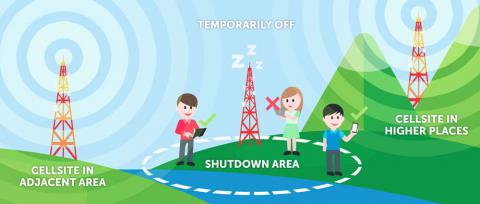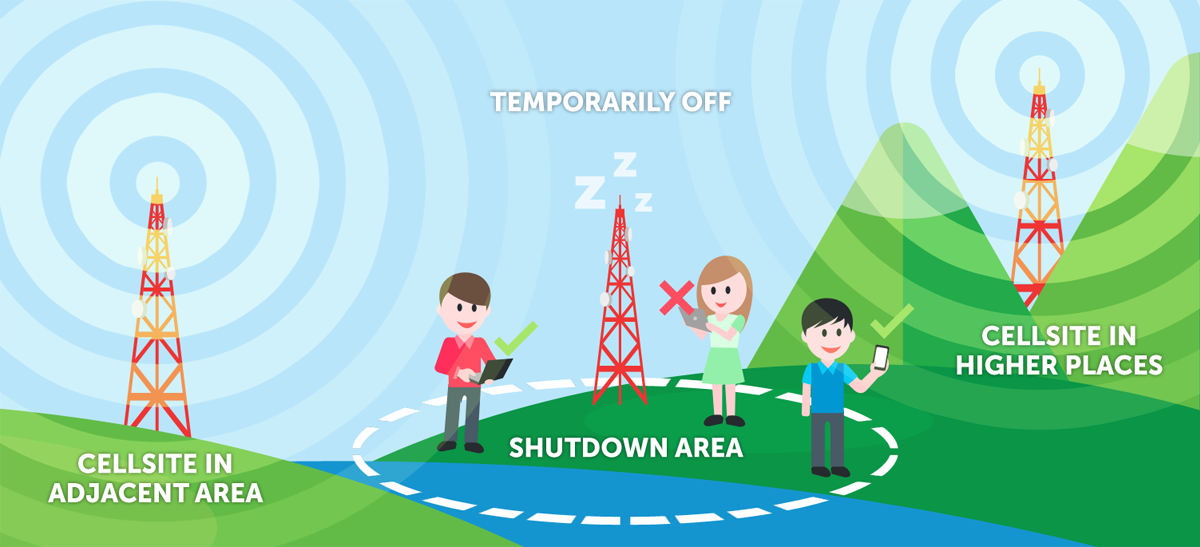
Temporary suspension of services in the interest of the security and safety of the public.

You may have heard about, or personally experienced mobile phone services being temporarily suspended during high-profile public events attended by large crowds. For example, during the Quiapo Black Nazarene procession, mobile phone services along the procession route and adjacent areas were not available for the duration of the activity. Network services were also shut down during the Sinulog Festival in Cebu City, the Dinagyang Festival in Iloilo and the Miss Universe activities in Lapu-Lapu City, Cebu.
Why does this happen, and how is it being implemented? These suspensions of services were done based on orders of police and security authorities and the National Telecommunications Commission (NTC) in the interest of the security and safety of the people participating in and attending these big events, following a process laid out by appropriate government agencies to mobile service providers.
Security or law enforcement authorities like the Philippine National Police (PNP) may identify security threats in these places and events, and if deemed necessary, will direct a shutdown of mobile phone signals by sending an order to the National Telecommunications Commission (NTC) - the country’s telecoms regulator.
The NTC, upon review and approval of the PNP’s request will issue a written order to the mobile phone service providers to implement the temporary service suspension in the specified places at the specified times. Non-compliance on the part of the telcos can lead to sanctions, and worse, endangering the general public.
During network shutdowns, cell sites servicing the shutdown areas are, to put it simply, turned off. But the process is not as simple as flicking a switch. That is why telcos need time to prepare for a shutdown.
Also a common misconception is that the absence of mobile signals is due to activation of signal jammers. Smart Communications has stated that it does not conduct signal jamming activities. To comply with the NTC orders, it must “deactivate” cell sites servicing the shutdown areas.
In most cases, shutting down cell sites in the identified shutdown zones is not enough to implement a total mobile signal blackout. Cell sites in adjacent areas and higher places may still be able to provide a signal in the shutdown zone. That is why cell sites in areas far from the shutdown zone may also have to be turned off in order to comply with the shutdown order.
Smart says it is closely coordinating with the authorities during these shutdown periods. As soon as the authorities give the go signal, Smart starts the process of powering up the cell sites which may take an hour or so, until network services are fully restored, ready to serve and connect the public.


